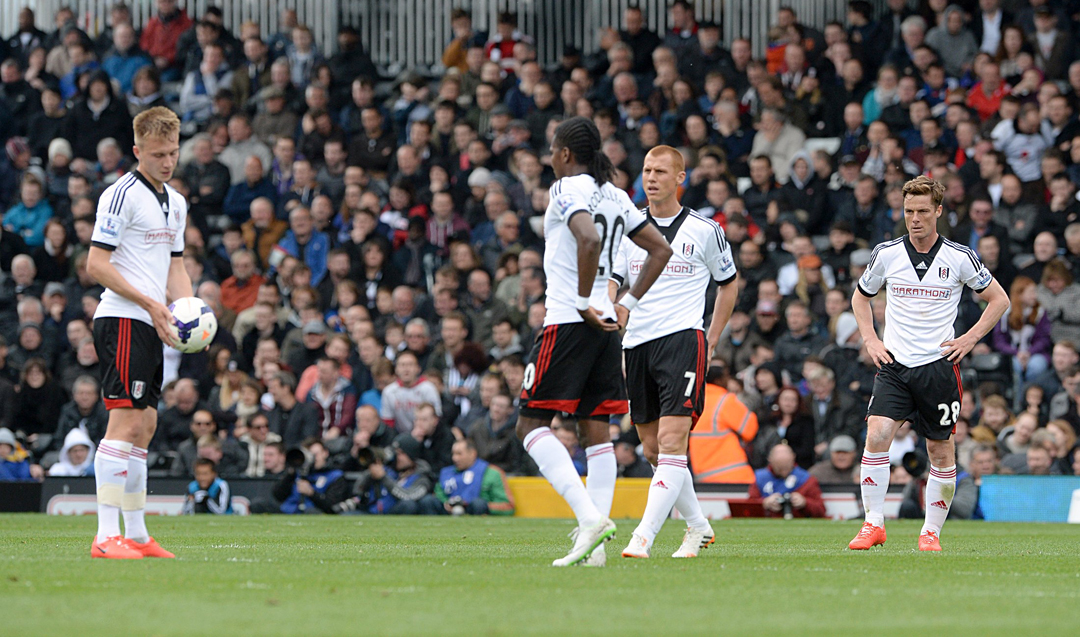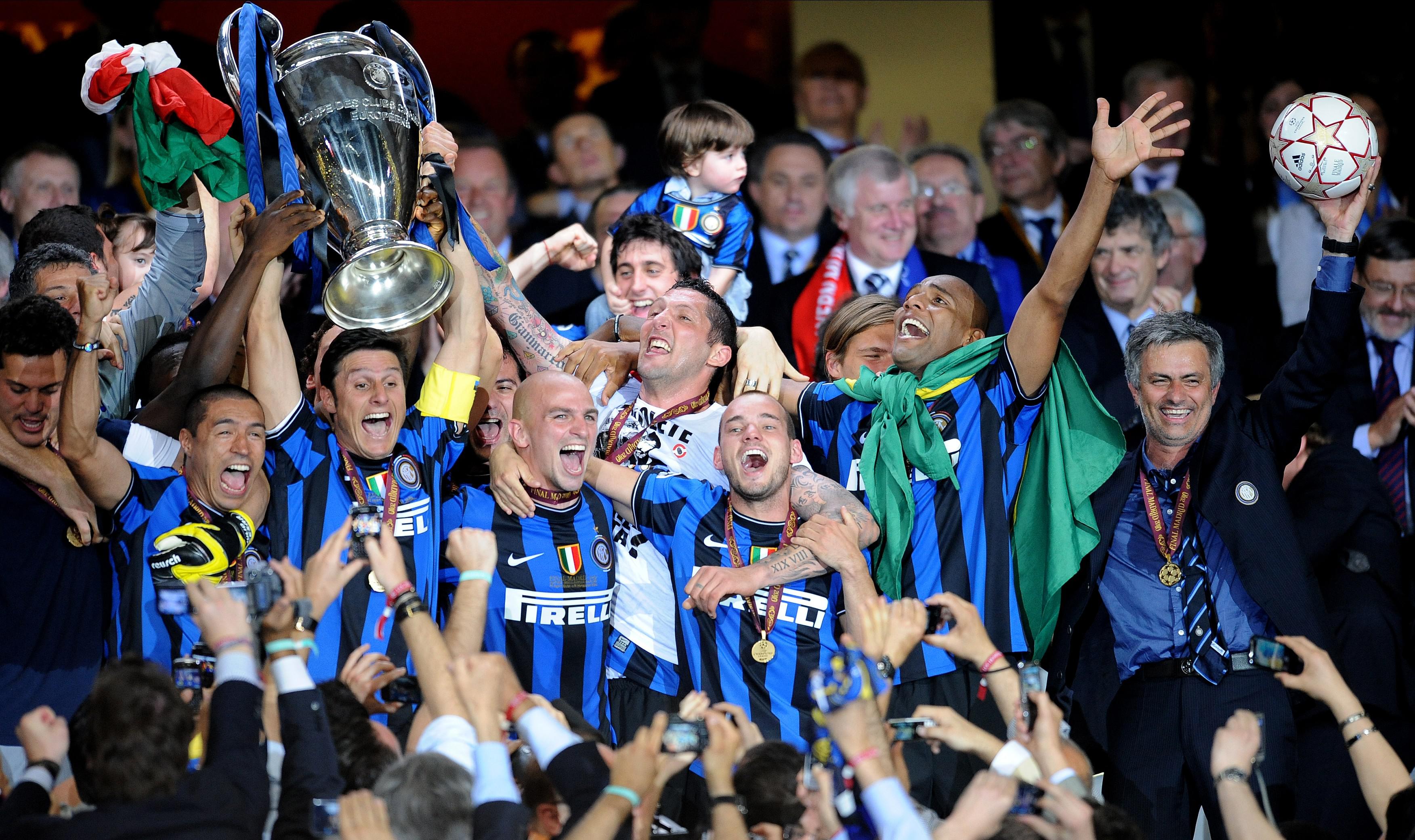Report card: Cottagers' campaign collapses amid confusion and chaos
Fulham’s 13th consecutive top-flight season was (un)comfortably their worst, writes Nick Ames...

The lowdown
They probably had it coming, Fulham hadn’t finished below 12th in the Premier League in five seasons, and had only ever troubled the bottom five twice, but this campaign seemed ill-starred from the beginning.
Fulham had ended 2012/13 badly, losing six of their final eight. Martin Jol’s response was to enlist experience, Scott Parker, Darren Bent and Maarten Stekelenburg joining an already ageing side, while adding Adel Taarabt to a maverick set of attacking options that already included Dimitar Berbatov and Bryan Ruiz.
It says enough that, by the end of January, Jol’s trio of dilettantes had moved on. The manager, too, was long gone. Fulham’s season – which had begun semi-acceptably with three wins in their first eight – had quickly unraveled into a plan-averse mess. Six consecutive defeats, culminating in a 2-1 home reverse to Spurs, rooted them in the bottom three.
Get FourFourTwo Newsletter
The best features, fun and footballing quizzes, straight to your inbox every week.
That match was the first under Rene Meulensteen, who had been brought in to assist Jol three weeks previously but, with jarring predictability, was soon invited to jump into his grave. Meulensteen called for the cavalry, signing eight players and splurging £13 million on Kostas Mitroglou alone. Results picked up at first but, by early February, Fulham were rock bottom and had lost to Sheffield United in the FA Cup.
A reshuffled side’s draw at Old Trafford, secured through one of the season’s more remarkable smash-and-grabs, hinted at an upturn – but that was as good as it got. Valentine’s Day saw a terse statement announce the appointment of Felix Magath – with Meulensteen out on his ear after 16 games.
Despite the odd timing, Fulham seemed a reasonable bet for a great escape under the German, renowned for his uncompromising approach. In practice his impact was moderate; although successive April victories against Aston Villa and Norwich offered reasonable hope of salvation, a late comeback by Hull and an unforgivably weak surrender at Stoke burst the optimism and sealed a deserved fate. From 12 games, Magath earned 12 points – not much of a new-boss bounce, and not enough to save Fulham.
It’s not all bad news: Fulham have a host of talented youngsters waiting in the wings, several of whom were called upon. But three managers and 38 players used in a single Premier League season tell their own story. Try as you may, it’s hard to identify exactly what Fulham were trying to do at any point in the campaign.

Would they have taken this in August?
Of course not. A few warning signs were there, but a bit of freshening-up looked as if it should see them right.
Would they have taken this in January?
No. Two points adrift of safety at the month’s end, and with the prospect of a dynamic attacking spearhead in Mitroglou, survival seemed well within reach.
High point
Bent’s late equaliser at Old Trafford was great fun and seemed to have set the stage for a Meulensteen-led revival, but the apex of Fulham’s season probably came 19 minutes into their eighth game. Pajtim Kasami’s chest and volley on the run, levelling things up at Crystal Palace, might have been the most technically difficult goal scored in the Premier League all year – and Jol subsequently placed it above ‘that’ strike by his compatriot Marco van Basten. Fulham strode clear to win 4-1, Palace parted company with Ian Holloway, and the two sides seemed on different enough paths.
Low point
Where to start? There was the pitiful capitulation at Stoke that confirmed relegation, or perhaps January’s 4-1 home reverse to a then-stricken Sunderland, but it was the 6-0 trouncing at Hull on December 28 that said Fulham wouldn’t be getting out of this any time soon. You just don’t ship half a dozen to Steve Bruce’s side, and you certainly don’t bleed them all in 35 second-half minutes. “I’ve asked myself what happened and I’ve asked the players. I didn’t see this coming,” said Meulensteen, and it wasn’t the last nasty surprise he’d be in for.
Hero of the season
Creaking legs were a big issue for what was too often a sluggish Fulham outfit, particularly in the first half of the season, but Steve Sidwell was neither symptom nor cause. On an individual level, the 31-year-old had his best season since Reading’s 2006/07 campaign, top-scoring with seven league goals while showing the impetus and initiative that most of his team-mates lacked. A player who had seemed to be on the decline will now be on a few shopping lists this summer.
Villain of the season
Chairman Shahid Khan, who took Fulham’s ownership from Mohamed Al Fayed last summer, has plenty to answer for after a first season whose strategy boiled down to a series of increasingly desperate rolls of the dice. If the Jol-Meulensteen-Magath merry-go-round seemed farcical, the installation and subsequent removal of Alan Curbishley and Ray Wilkins in different roles were no better. Al Fayed pointed the finger at Khan’s removal of his beloved Michael Jackson statue as the primary driver behind Fulham’s relegation – which at least suggests a degree of awareness that he left the club in inadequate hands.
The season in microcosm
You can pick any number of games that showed Fulham weren’t good enough, but as a representative example let’s plump for February’s 3-0 home reverse against Southampton. Yet another shuffling of the pack saw Meulensteen make four changes from an insipid defeat at Swansea, but none of them made much impact as, after a passable enough first half, his team was picked off by a hungrier, slicker and far more energetic visiting side.
FFT grade
F. Fulham couldn’t have played things much worse on or off the pitch, and the transition from experience to youth will have to be managed expertly if they’re to be back any time soon.
SEE ALSO Read FFT's report cards for the other 19 Premier League teams
